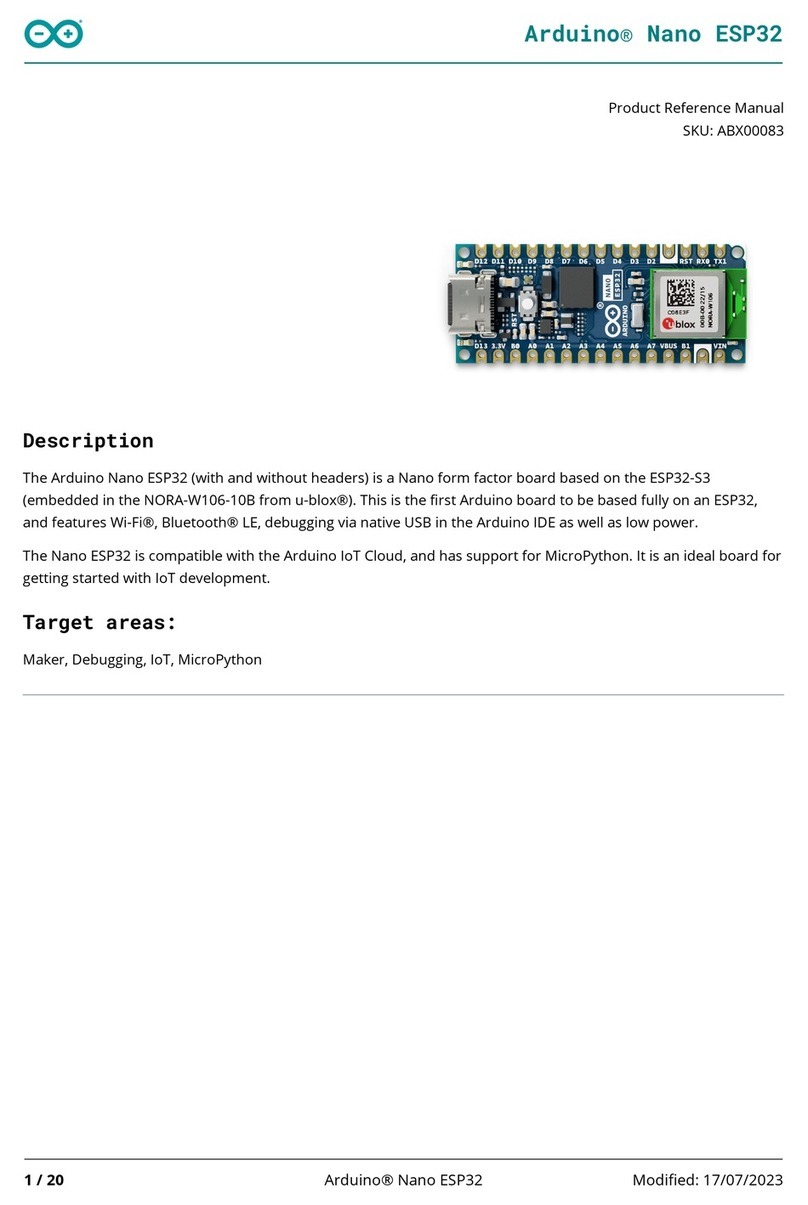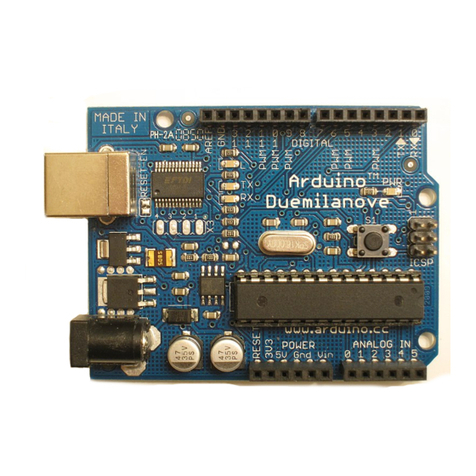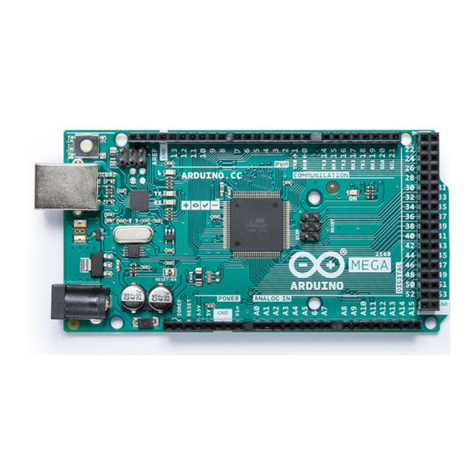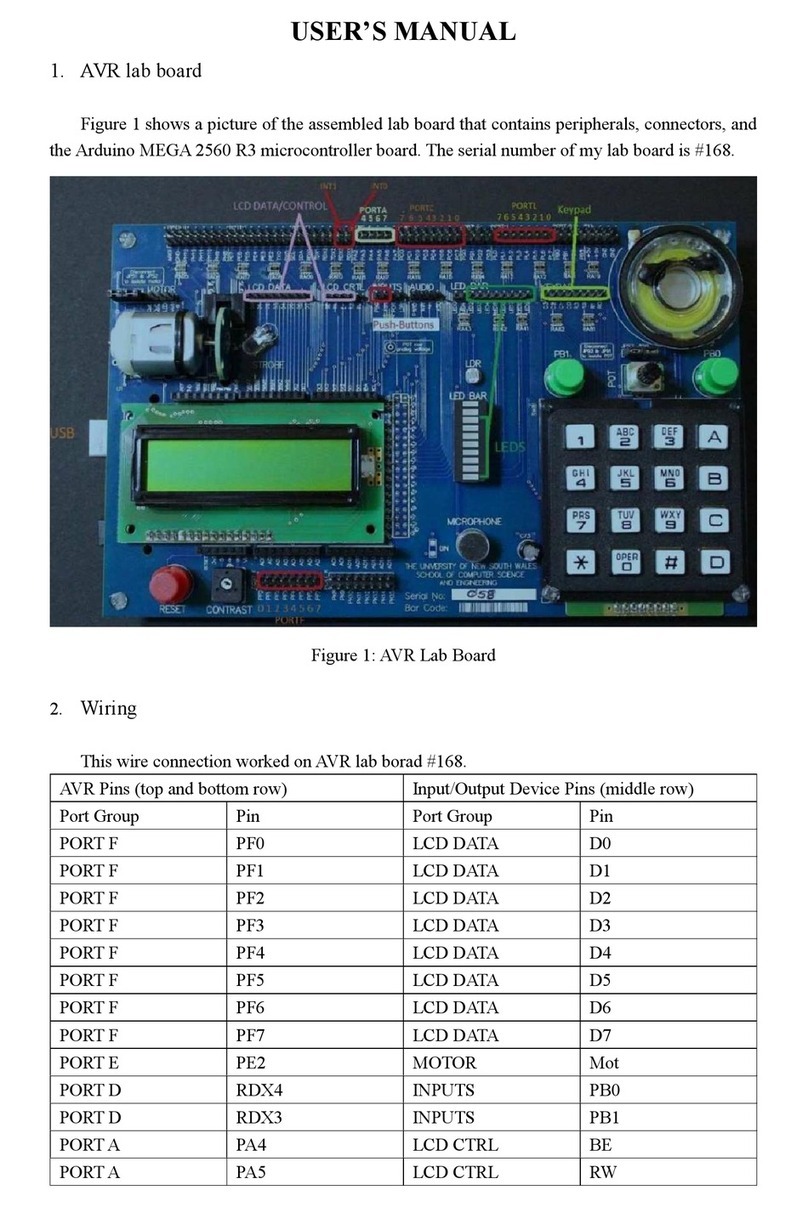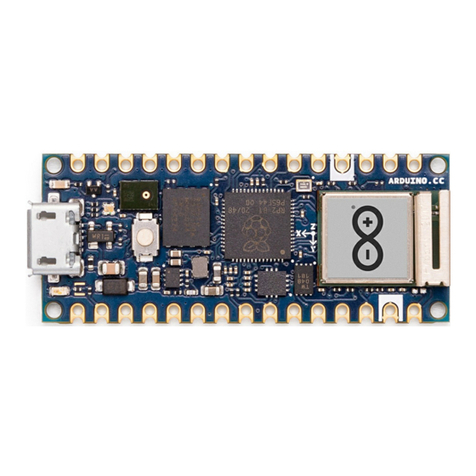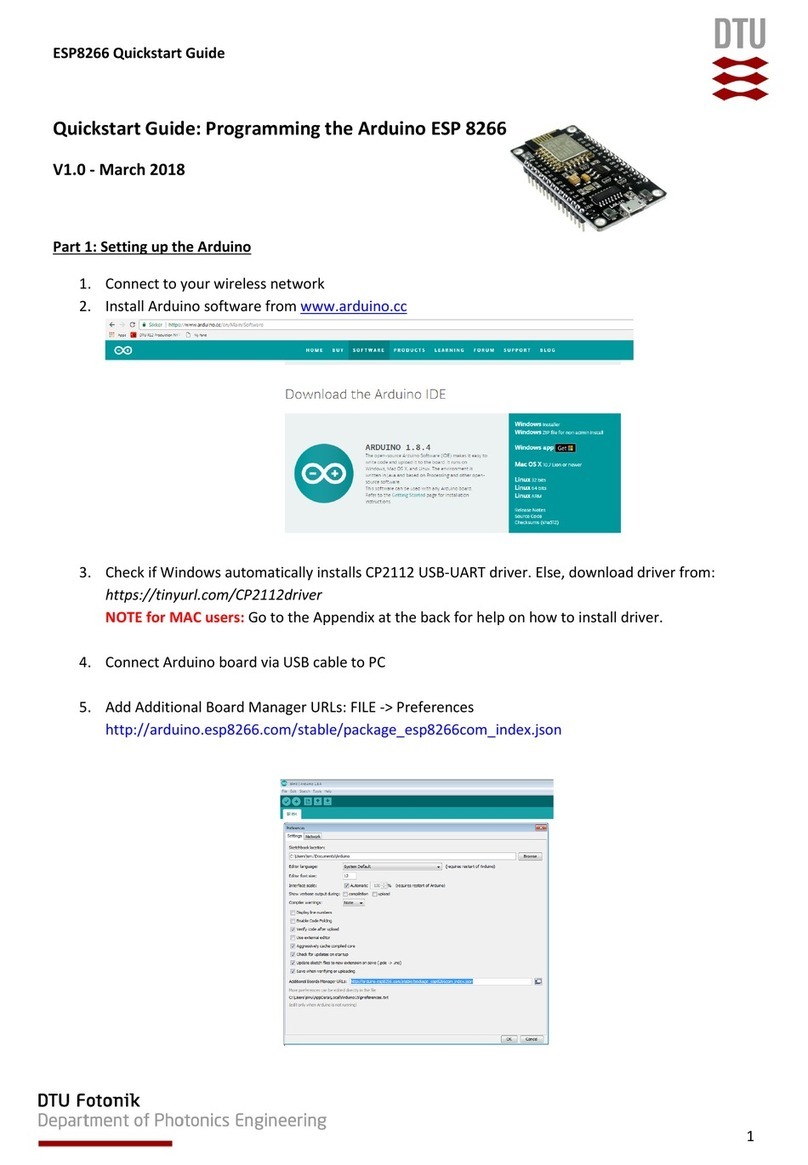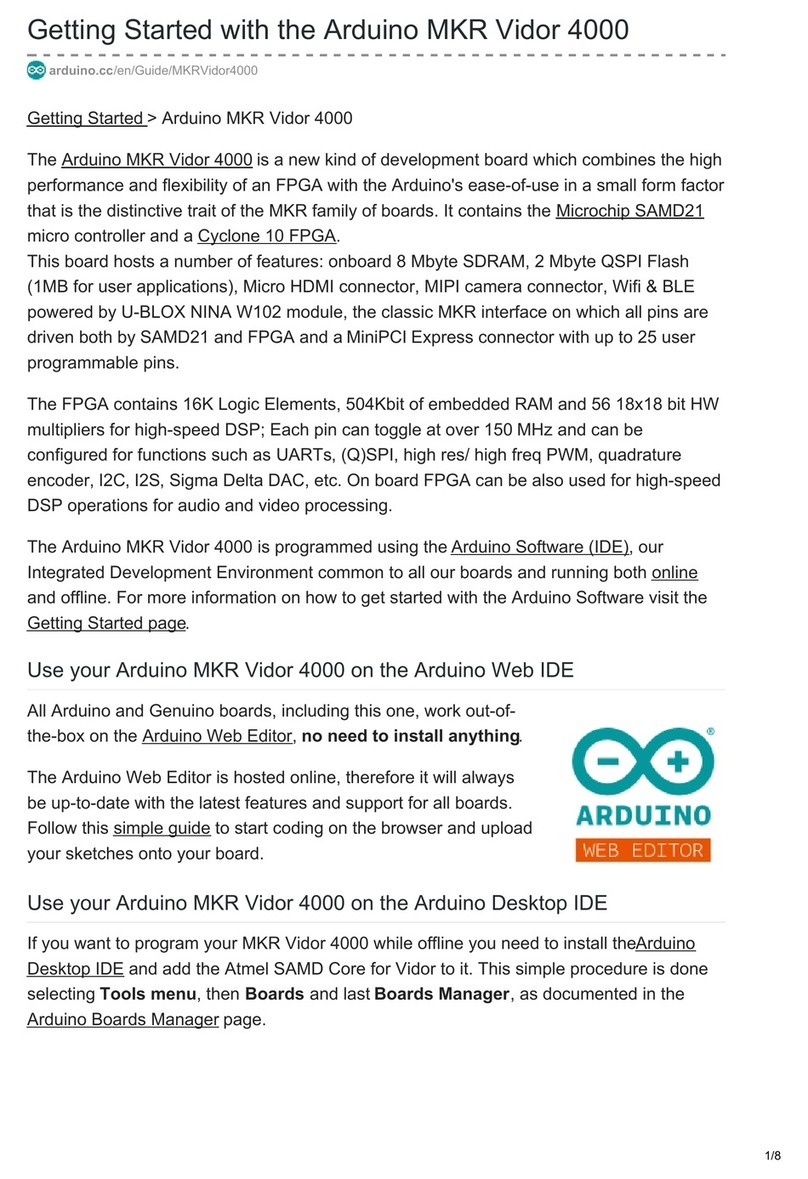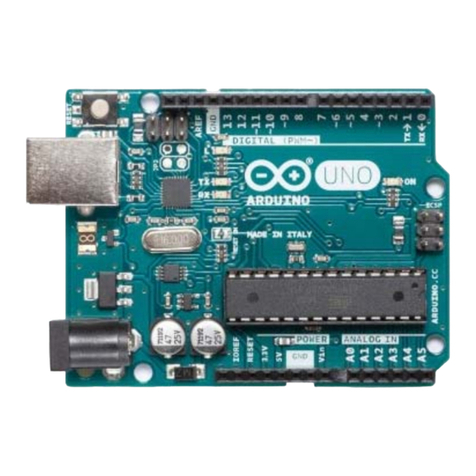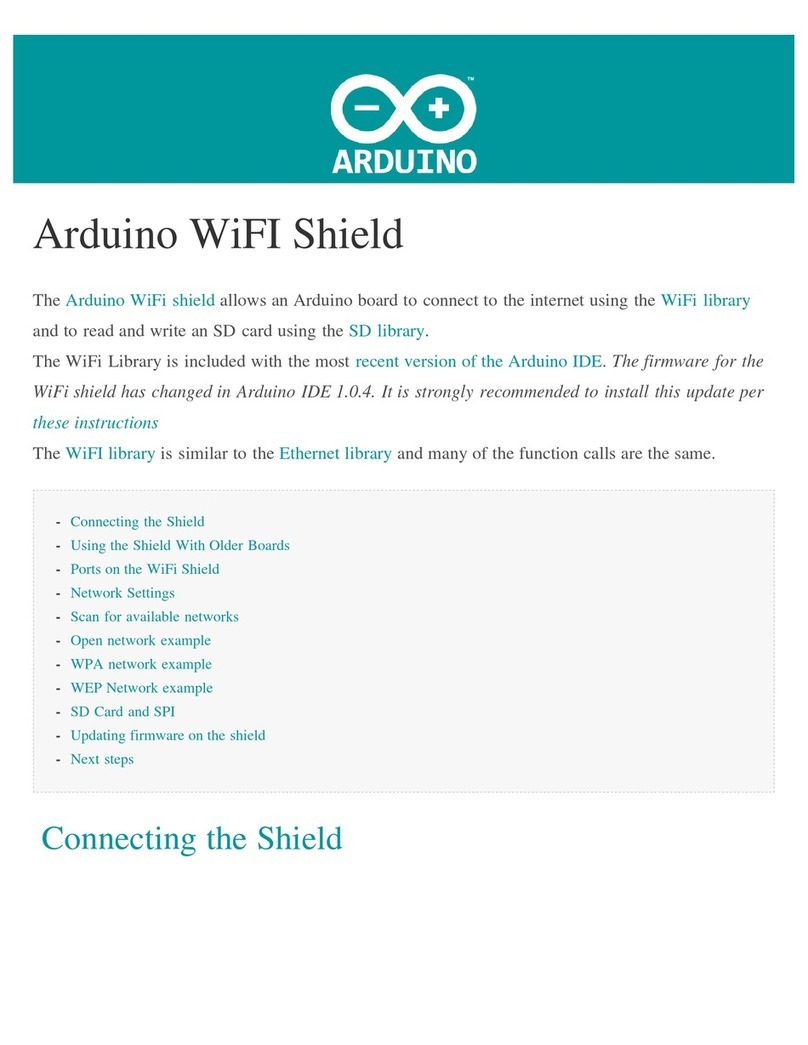5.1 Analog
Pin Function Type Description
1 +3V3 Power 5V USB Power
2 A0 Analog Analog input 0 /GPIO
3 A1 Analog Analog input 1 /GPIO
4 A2 Analog Analog input 2 /GPIO
5 A3 Analog Analog input 3 /GPIO
6 A4 Analog Analog input 4 /GPIO
7 A5 Analog Analog input 5 /GPIO
8 A6 Analog Analog input 6 /GPIO
9 A7 Analog Analog input 7 /GPIO
10 +5V Power +5V Power Rail
11 Reset Reset Reset
12 GND Power Ground
12 VIN Power Voltage Input
5.2 Digital
Pin Function Type Description
1 D1/TX1 Digital Digital Input 1 /GPIO
2 D0/RX0 Digital Digital Input 0 /GPIO
3 D2 Digital Digital Input 2 /GPIO
4 D3 Digital Digital Input 3 /GPIO
5 D4 Digital Digital Input 4 /GPIO
6 D5 Digital Digital Input 5 /GPIO
7 D6 Digital Digital Input 6 /GPIO
8 D7 Digital Digital Input 7 /GPIO
9 D8 Digital Digital Input 8 /GPIO
10 D9 Digital Digital Input 9 /GPIO
11 D10 Digital Digital Input 10 /GPIO
12 D11 Digital Digital Input 11 /GPIO
13 D12 Digital Digital Input 12 /GPIO
14 D13 Digital Digital Input 13 /GPIO
15 Reset Reset Reset
16 GND Power Ground
